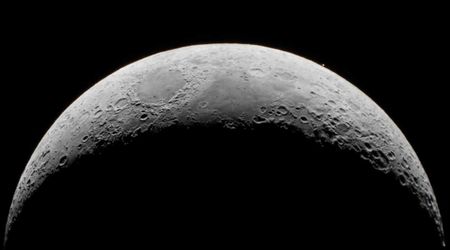Buck Moon 2025: Why July's low-hanging Full Moon is farthest from the Sun this year

This month's Buck Moon is set to appear on Thursday, July 10, emerging around sunset and remaining visible until sunrise. While all full moons occur when the Moon is directly opposite the Sun, receiving its complete illumination, this particular Full Moon stands out due to its unique distance, as mentioned by the BBC.

The Buck Moon will be the farthest Full Moon from the Sun this entire year, a direct consequence of Earth having recently reached aphelion. This orbital phenomenon, which occurred on July 3, 2025, signifies the point in Earth's elliptical journey where it is at its maximum distance from the Sun. Earth's orbit is not perfectly circular but rather elliptical. This means our planet's distance from the Sun varies throughout the year, with aphelion marking the furthest point and perihelion the closest.

Every Full Moon is positioned opposite the Sun from Earth, making the Moon appear as far from the Sun as possible from our perspective. However, the Buck Moon's appearance uniquely coincides with Earth itself being at its greatest distance from the Sun (aphelion), making it the most distant Full Moon of the entire year. Adding to its distinctiveness, the Buck Moon will appear low in the southern sky, a result of its opposition to the Sun during the summer solstice period. With the Sun currently at its highest point in the sky for the season, the corresponding Full Moon will maintain a low trajectory.

While most years feature 12 full moons, an additional 13th Full Moon, known as a Blue Moon, occurs approximately every 33 months. This discrepancy arises because the lunar cycle of roughly 29.5 days doesn't perfectly align with our 365.25-day Gregorian calendar, creating an annual difference of about 11 days. A Full Moon itself represents the halfway point in the Moon's orbit around Earth when it appears entirely illuminated from our vantage point. Although there's a precise moment of full illumination, the Moon will appear full the night before and after, providing ample viewing opportunities.
July's Full Moon earns its designation from the new antlers that emerge on male deer around this time of year. However, this full Moon is also recognized by various other traditional names. Native American tribes, for instance, referred to it as the "Thunder Moon" due to the frequent summer thunderstorms, and sometimes the "Salmon Moon" or "Raspberry Moon." In Celtic traditions, it was known as the "Claiming Moon," "Wyrt Moon," "Herb Moon," or "Mead Moon," signifying the period for gathering herbs for remedies and spices. The Anglo-Saxons called it the "Hay Moon" in recognition of the July Hay Harvest.
Besides its visible size, the Buck Moon might display a striking orange color. This isn't the Moon's natural shade; instead, it's a fascinating effect of Earth's atmosphere. When moonlight passes through the thicker air layers near the horizon, blue and violet light scatter, allowing the warmer reds and oranges to become visible, creating this stunning look. Also, watch for another common lunar sight: a bright halo around the Buck Moon. This occurs when moonlight interacts with nearby clouds, forming glowing rings and other captivating light patterns. Keeping an eye out for these optical illusions will add another layer of wonder to your viewing experience, according to the BBC.

You can observe the Moon from almost anywhere, but for the best views, find open spaces like rural hilltops, east-facing beaches, or national parks with minimal light pollution. These locations provide an unobstructed view, especially towards the eastern horizon, according to The Economic Times.









